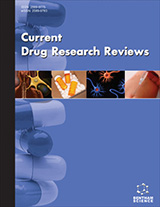
Abstract
Background: A high-performance liquid chromatography (HPLC) method was developed for the determination of Pantoprazole Sodium (PPZ) in the presence of its degradation products. The degradation of PPZ was studied in simulated intestinal fluid (SIF) and simulated gastric fluids (SGF) in various temperature conditions.
Aim: This study aimed to establish a simple, sensitive, and rapid RP HPLC method for in-vitro determination of Pantoprazole Sodium and its degradation products in simulated gastric and intestinal fluids.
Objective: Pantoprazole is acid labile drug. In order to determine pantoprazole in various oral dosage forms, the stability-indicating assay of PPZ was performed in phosphate buffer (pH 6.8) representing simulated intestinal fluid (SIF) and in 0.1 molars (M) Hydrochloric acid (HCl) as simulated gastric fluid (SGF) at two different temperature conditions, i.e., 25°C and 0°C, respectively.
Methods: Pantoprazole sodium was obtained from the Akums laboratory in Haridwar. The analysis was performed by high-performance liquid chromatography (HPLC), Shimadzu, equipped with two LC-10 AD VP solvent-delivery modules, a SPD-10A UV–-visible detector, and a manual injector valve with 20 μL sample loop. Phenomenex ODS analytical column (150 mm × 4.6 mm i.d., 5 μm particles) was done under reversed-phase partition chromatographic conditions. The mobile phase was phosphate buffer and acetonitrile (ACN) of pH 7.4, respectively, optimized in a 70:30 (v/v) ratio followed by filtration through a 0.45 μm membrane filter and degassed by ultrasonicator before use. The mobile phase was delivered at the flow rate of 2 mL/min. The various parameters, such as linearity, accuracy and precision of the analytical method, were studied.
Results: The standard curve of PPZ was linear (R2>0.99) over the concentration range of 5-30 μg/mL, and the relative standard deviation (RSD) values for intra-day and inter-day variations were in the range of 1.0-1.8%. The range of RSD was within ±2.
Conclusion: The stability of PPZ in aqueous solution was pH dependent. The rate of degradation increases with decreasing pH. The pH stability of pantoprazole was studied at the above-mentioned temperature conditions. The PPZ peaks were analyzed by comparing them with fresh samples and were stable in SIF solution after 24 hours elapsed time at pH 6.8. The obtained degraded peaks in SGF (pH 1) were successfully separated from the PPZ.
Graphical Abstract
[http://dx.doi.org/10.1016/S0149-2918(00)83061-1]
[http://dx.doi.org/10.1016/0014-2999(92)90178-7] [PMID: 1330598]
[http://dx.doi.org/10.1002/bmc.1177] [PMID: 19360758]
[http://dx.doi.org/10.4152/pea.200805433]
[http://dx.doi.org/10.1111/jgh.13597] [PMID: 27637734]
[http://dx.doi.org/10.1016/j.bpg.2019.04.002] [PMID: 31785730]
[http://dx.doi.org/10.2174/2589977515666230221160449] [PMID: 36824005]
[http://dx.doi.org/10.1002/pds.4043] [PMID: 27255671]
[http://dx.doi.org/10.1001/jamainternmed.2014.4056] [PMID: 25201154]
[http://dx.doi.org/10.1080/03639040802220284] [PMID: 18720145]
[http://dx.doi.org/10.1186/s12916-016-0718-z] [PMID: 27825371]
[http://dx.doi.org/10.1016/j.giec.2019.12.005] [PMID: 32146944]
[http://dx.doi.org/10.1007/s00228-019-02810-1] [PMID: 31838548]
[http://dx.doi.org/10.1186/s12913-019-4725-6] [PMID: 31752835]
[http://dx.doi.org/10.2146/ajhp151032] [PMID: 28122752]
[http://dx.doi.org/10.54085/ap.2023.12.1.97]
[http://dx.doi.org/10.1016/j.ijpharm.2018.04.007] [PMID: 29635054]
[http://dx.doi.org/10.3390/pharmaceutics14112324] [PMID: 36365143]
[http://dx.doi.org/10.1016/j.heliyon.2021.e06553] [PMID: 33855234]
[http://dx.doi.org/10.1002/jps.2600600302] [PMID: 5572109]
[http://dx.doi.org/10.1016/j.jpha.2013.09.003] [PMID: 29403878]
[PMID: 5720916]
[http://dx.doi.org/10.1016/S0731-7085(02)00047-X] [PMID: 12049968]
[http://dx.doi.org/10.1155/2018/5943914] [PMID: 29850373]
[http://dx.doi.org/10.1016/j.jpba.2017.05.006] [PMID: 28579052]
[http://dx.doi.org/10.1007/s00216-016-9753-z] [PMID: 27449644]
[http://dx.doi.org/10.1136/ejhpharm-2016-001034] [PMID: 31157010]
[PMID: 24147343]
[http://dx.doi.org/10.1016/j.arabjc.2011.02.010]
[http://dx.doi.org/10.1208/s12249-014-0207-7] [PMID: 25160675]
[PMID: 28911469]
[http://dx.doi.org/10.1002/jssc.201300419] [PMID: 23857714]
[http://dx.doi.org/10.1081/DDC-100102270] [PMID: 10518247]
[http://dx.doi.org/10.1016/j.jchromb.2005.06.011] [PMID: 16005696]
[http://dx.doi.org/10.1080/10826076.2012.758137]
[http://dx.doi.org/10.1007/BF02490382]
[http://dx.doi.org/10.1080/10826076.2015.1079722]
[http://dx.doi.org/10.1016/S0731-7085(99)00275-7] [PMID: 10727122]
[http://dx.doi.org/10.18433/J3GP4Q] [PMID: 20456825]
[http://dx.doi.org/10.1016/j.aca.2004.07.023]
[http://dx.doi.org/10.2174/1573412910999140113115903]
[http://dx.doi.org/10.2174/1573412915666190304142952]
[http://dx.doi.org/10.2174/1573412915666190222161942]
[http://dx.doi.org/10.2174/1573412915666190328215854]
[http://dx.doi.org/10.1016/j.arabjc.2010.06.033]
[http://dx.doi.org/10.1248/cpb.54.814] [PMID: 16755049]
[http://dx.doi.org/10.2174/1573412916666191114120213]
[http://dx.doi.org/10.1365/s10337-007-0220-z]
[http://dx.doi.org/10.3889/oamjms.2019.237] [PMID: 31316654]
[http://dx.doi.org/10.2147/DDDT.S279302] [PMID: 33380789]
























